Harvesting and Cooking Nettles
January 28, 2010 | Updated April 29, 2025
As an Amazon Associate I earn from qualifying purchases.
Harvesting and cooking nettles are part of the rhythm of my foraging year, and chances are you have stinging nettles growing somewhere near you, no matter where you are reading this. Here’s how to find, harvest — and most importantly, de-sting — your stinging nettles.
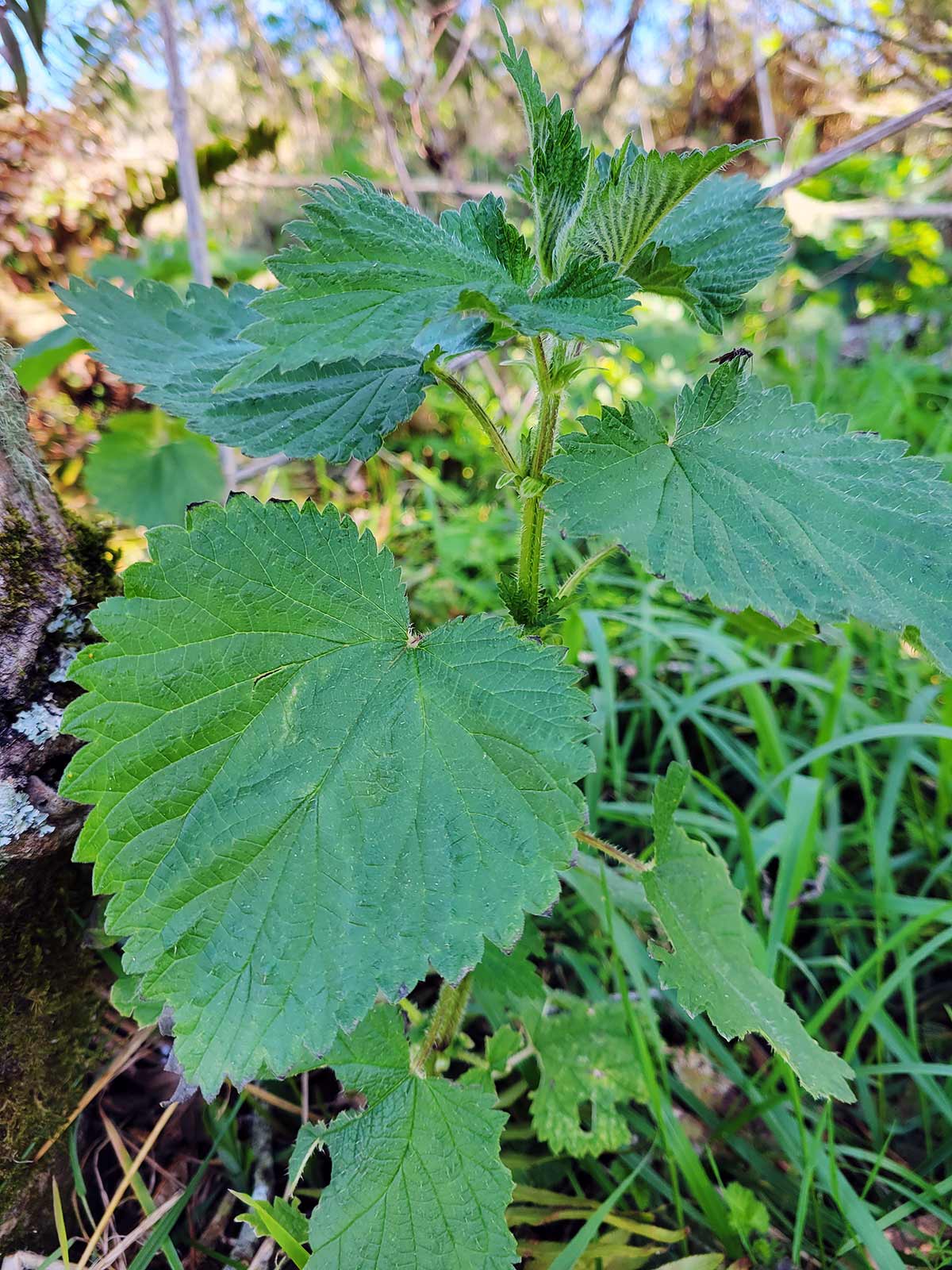
A number of plants go by the name stinging nettles, but most all work the same way in the kitchen. In this article, I’ll show you where to look, how to safely harvest nettles, and then the best ways to cook nettles.
Let’s start with why bother harvesting nettles? Two main reasons, really: Flavor and nutrition.
I love the “green” flavor of nettles, which tilts toward the briny and oceanic, depending on where you find them. There is a saltiness to nettles that is unmistakable. It’s usually the very first wild spring green of the year.
Nutrition is the other. Stinging nettles are so nutritious they make spinach look like a Twinkie. Nettles are very high in Vitamin A, C and K. They are unusually high in protein for a green plant, too, and they are high in antioxidants. All told, nettles are one of the most nutritious green plants you can eat.
Most of us have come across Urtica dioica at some point in our lives, probably as children when we happily ran through the grass, only to turn tail screaming in pain. My friend Josh calls nettles “electric grass.” Blame the chemicals in their many, many tiny stinging hairs. We’ll get to that in a moment.
If you want to find nettles, know first that they are in every state and province in the US and Canada, as well as parts of Mexico as well. And they are all over Europe. There is some debate over whether U. dioica is native to this hemisphere or not.
Four other species are common here in the United States, Urtica urens, U. chamaedryoides in the South, and in the Desert Southwest, Urtica gracilenta. There’s also wood nettle, Laportea canadensis.
Nettles in general like disturbed places, wettish areas and places in and around people. Look for them alongside irrigation ditches, in moist meadows, in the understory of the trees alongside rivers, and in some fallow farm fields. Nettles spread via underground rhizomes as well as through lots of seeds.
You want to harvest nettles in early spring. I’ve seen them as early as Christmas in Sacramento, but February through March is the best time in California. They’ll start as late as May in Canada.
Nettles are among the earliest green plants to take off, which is why they have been a spring tonic food for humans wherever they live.
Harvesting Nettles
Harvesting nettles is easy, but you will want gloves. I don’t mind the sting, which is a cocktail of chemicals spring loaded in the plant’s gnarly stinging hairs, but even I will wear glove if I am picking grocery bags full.
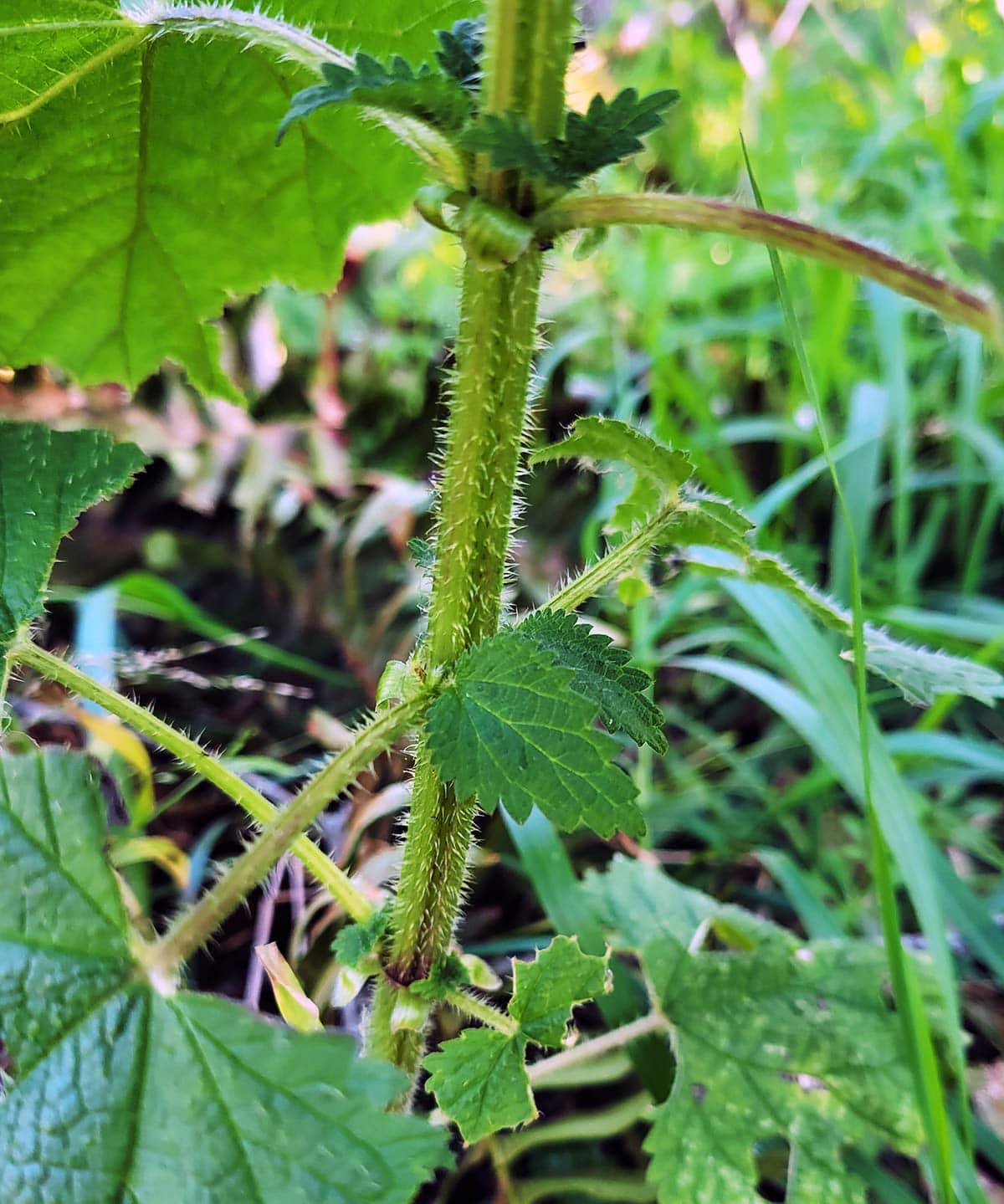
They key to harvesting nettles is to nip off the top of the plant with your fingers. If you can do that easily, that’s the right stage to harvest. The stems of stinging nettles become so stringy that when the plant is mature in summer, it makes outstanding cordage.
Even still, you want nettle leaves, not stems, although the very tender top of the plant in spring is good to eat.
Like many tender greens, stinging nettles shrink down when cooked, so gather more than you think you need. I generally gather no less than a grocery bag of U. dioica or wood nettles, and more when I am harvesting U. urens, which has smaller leaves.
Once you’re home, you will want to dry or blanch your nettles. Dried nettles are a good off-season green thing to add to soups and stews, and many people like nettle tea. I do not. There are apparently some herbal medicine uses for stinging nettles, but that is not my area of expertise. I’m here for the food.
If you want to dry your nettles, tie the stems together with twine and hang them upside down in a dark, dry place, or put them in a dehydrator set at its lowest setting, below 100°F if possible. Do not dry nettles in the oven; you’ll ruin them.
Mostly I blanch my nettles. Here’s how to go about it.
Prepping Nettles
Blanching is the act of boiling a green thing in very salty water for a short time, then shocking it in a bowl of ice water sets and brightens color so much you will think the greens on my photos have been messed with; they’re not. If you take nothing else from this post, remember to blanch your green vegetables before storing or cooking them.
Start by getting a very large pot mostly full of water boiling. Add a good handful of salt; you want it salty. Then, using tongs, grab a bunch of nettles and submerge them in the boiling water. Let them boil 2 minutes, then move them to a big tub of icy water.
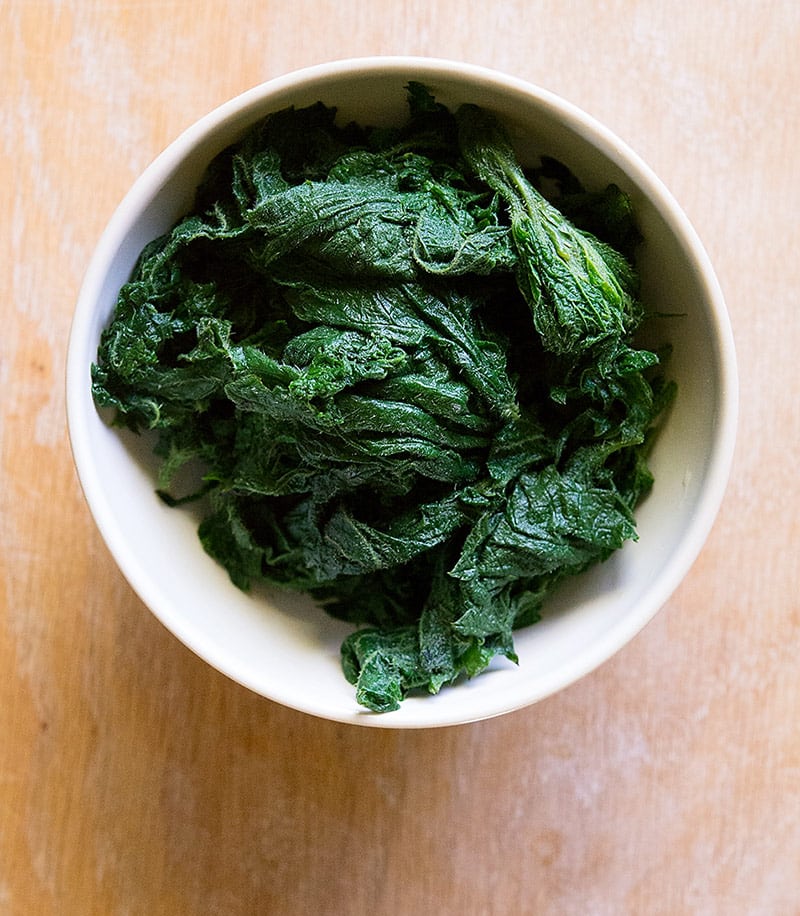
After its bath in the ice water, set the now stingless nettles in a colander to drain. After this, strip the leaves away from the stems. Discard the stems.
Now, if you are making nettle pasta, you won’t want to squeeze the water out of the leaves. You need it for the moisture in the dough.

But in general, you will want to squeeze out excess moisture from your blanched nettles. Put the wet nettles into a kitchen towel.
Here’s an important part to remember when cooking nettles: Take the towel and roll the greens in it like a candy wrapper: One end twists one way, the other end twists the opposite way. Squeeeeze! More blue-green liquid runs out. Now you’re done. You now have prepped stinging nettles, ready to be frozen in a vacuum-seal bag or Ziploc, or cooked in any number of ways.
This is your standard prep after harvesting nettles. Is it worth it? You bet.
Cooking Nettles
First and foremost, you can use them as a cooked green in any recipe that calls for cooked greens — especially those where you chop the greens. Some of my favorite recipes that are not specific to stinging nettles are:
- Italian ricotta dumplings with greens, spinach, nettles, etc.
- Irish colcannon, which is mashed potatoes with green things in it.
- Using nettles in this gnocchi recipe, where the dumplings are swimming in a gorgeous carrot consommé.
- I know, again with the dumplings! Sue me. This one is a German spätzle, made with any pureed green, but nettles are my favorite.
- Nettles are also great in any number of soups and stews, like this venison soup. Technically you don’t even need to blanch them if you are doing this, but if you do just toss them into the pot, make sure you chop them first.
Always remember that wherever you have spinach in a recipe, you can use nettles. Case in point is my recipe for nettle ravioli.
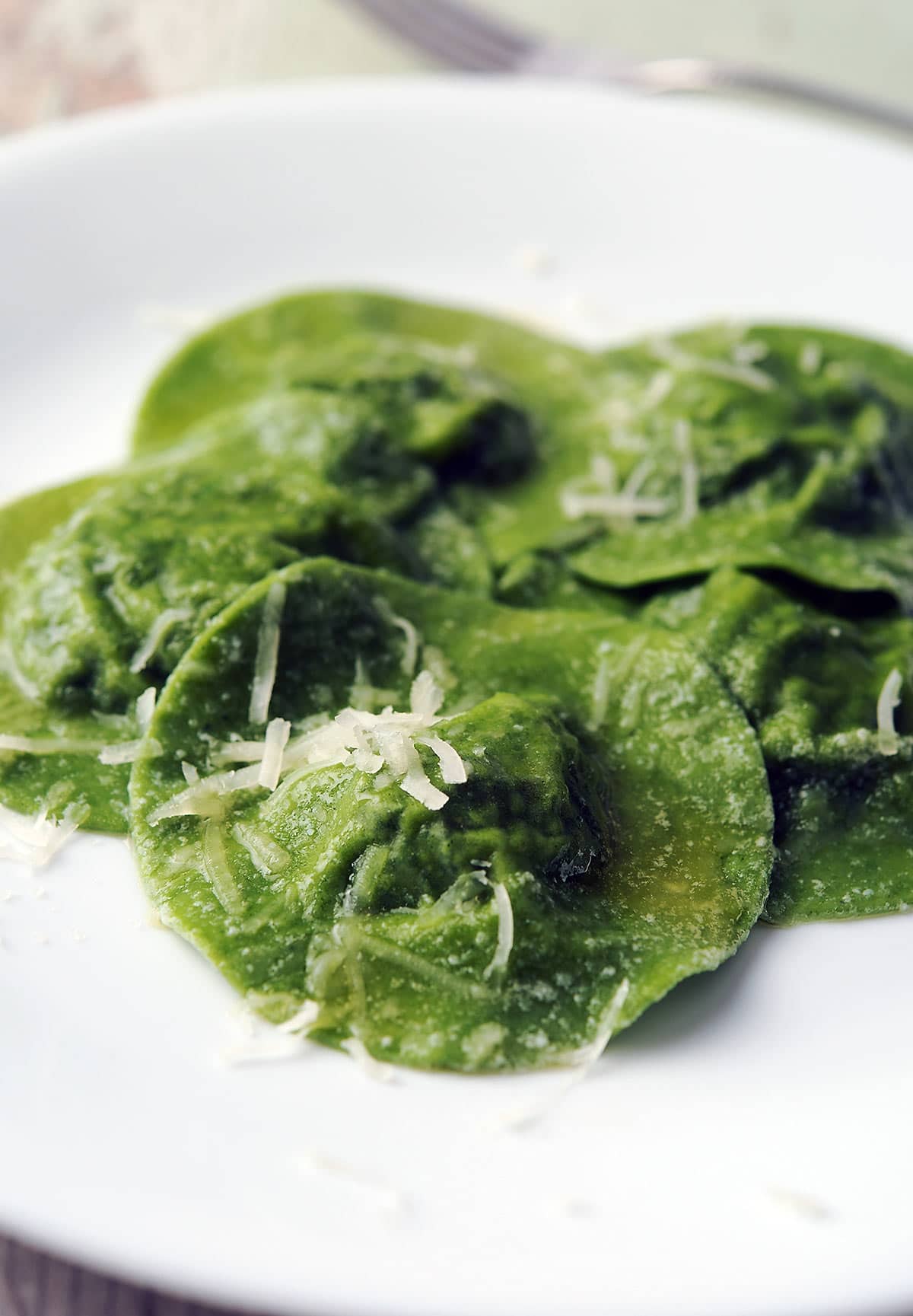
This is basically a spinach ravioli recipe, using the nettle pasta I referenced above with a nettle-ricotta filling. I mixed the prepared nettles with some leftover roasted potatoes and some mascarpone cheese, plus black pepper and salt. The combination was smooth, rich, and added that “green” taste you expect from wild things. These were so damn tasty.
Keeping with the Italian tradition, I make a pretty classic recipe for nettle pesto, which you can thin out with a little olive oil to make it more saucy for pasta or over fish, chicken, turkey or polenta. That, added to a plain risotto, makes a dynamite nettle risotto.
The other super method of cooking nettles is to cook them into a soup, usually an emerald, pureed soup.
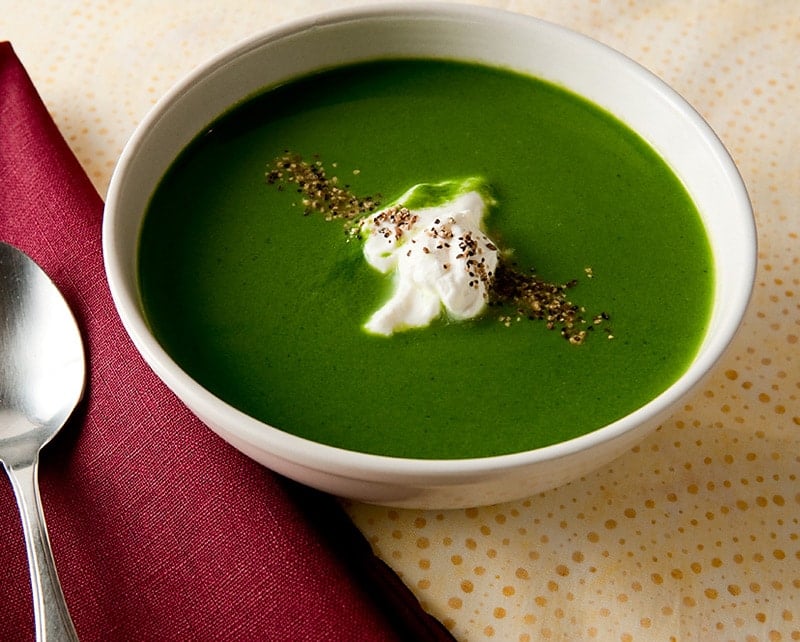
Most nettle soup recipes use potato as their base, a little like a potato-leek soup, but I prefer a Scandinavian rendition called nasselsoppa, which sometimes uses white fish as its base. It sounds weird, a pureed fish soup, but it’s really very good.
These are just a few of the methods for cooking nettles, and there are many more. Any Indian recipe where you have spinach springs to mind, as does Greek spanakopita.
Finally, if you have nettles you are not immediately using, you can squeeze them dry, vacuum seal them, and store in the freezer for a year.
Blanched Nettles
Ingredients
- 3 tablespoons salt
- 2 pounds fresh stinging nettles
Instructions
- Fill a stockpot that will hold a gallon or two of water 3/4 of the way full and bring it to a boil. Add the salt when the water is hot.
- While the water is heating, pick through your nettles for any other plant matter, and use scissors or shears to remove any tough stems. At this stage the nettles still have their sting, so wear gloves or just know that it'll be a bit zippy.
- Get a large bowl or basin full of ice water. Make it so cold it hurts your fingers.
- Submerge the nettles into the salty boiling water and boil them hard for 2 minutes. Remove them and submerge in the ice water. Let them sit until they're cool. Drain them in a colander.
- If you want, put the nettles in a kitchen towel and wring out as much water as you can. At this stage they're perfect for pureeing, mincing, or storage.
Nutrition
Nutrition information is automatically calculated, so should only be used as an approximation.
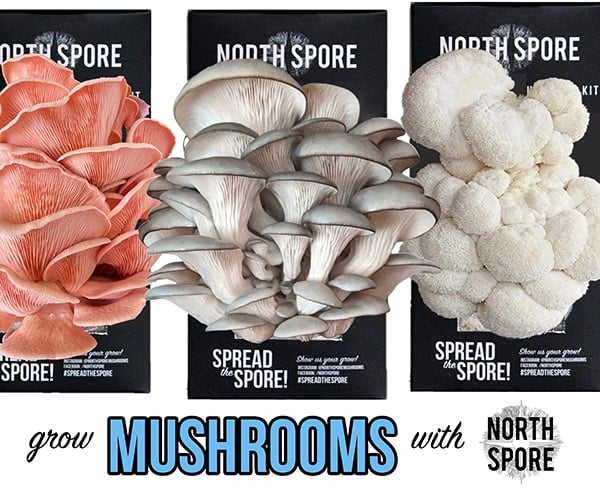


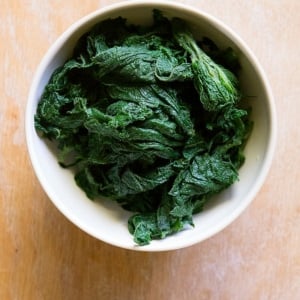

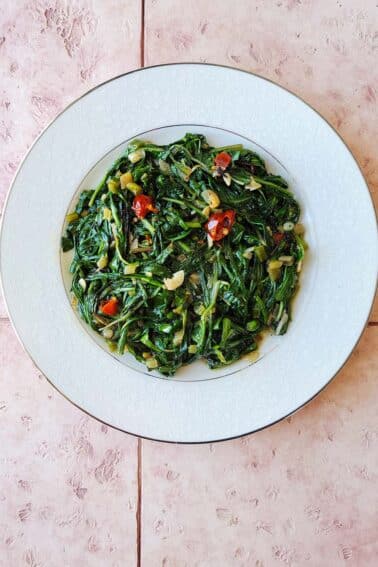

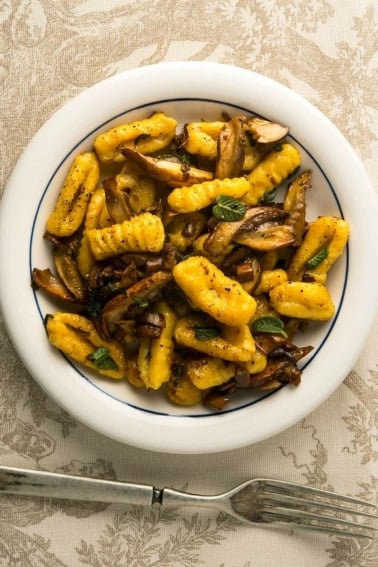
I’ve been eating nettles for years and have never noticed any fishiness, until late last week, when I was using up the last of my harvest from early in the week. The nettles were a bit older and had not been refrigerated because my fridge is stupid small, but it’s been chilly here in the PNW and they were on the shady side of the house. Nonetheless, they were not as vibrant as when I usually process them, and when I did, they had a distinct fishy scent and taste that was so strong as to make them inedible to me (a lifelong vegetarian).
Interestingly, my husband couldn’t taste the fishiness at all, though they did taste a little different to him. Maybe it’s some weird supertaster thing. I’m not a full-on supertaster but my sense of taste and smell is very developed, and I’ve experienced soapy tones in cilantro before. I got over it, but that’s distinctly a supertaster thing.
It doesn’t sound like your nettles were old at all, so my experience may not help you much, I just thought you might like to know that someone else tasted fishy nettles. Cheers, and happy hunting to you.
Thanks for sharing this info. I’ve been meaning to try nettles for years. I just moved to a ranch where the nettles don’t seem to have as much sting. Now eating them almost daily in anything that I used to add greens to. I’m vegetarian, so the protein is a bonus. This morning fried up a hash with nettles, potatoes, seitan in olive oil.
I was trying to tell a friend about how much I LOVE nettles and he had this same reaction… like cat pee. No way! I wonder if people are genetically predisposed to like or dislike nettles like how some people think cilantro tastes like soap…he thinks cilantro tastes like soap, maybe they are connected.
I have tried to eat nettles no fewer than 15 times. The rank smell of cat pee makes my stomach turn every time. I end up throwing them out every time. The smell is real and VERY pungent. I can smell a patch of them far before I make visual contact.
Nettles are a truly underrated and underused food. I get the slight fish smell to me they also have a subtle flavor similar to squid.
Thanks for the post! I love nettles! I make a mix of dry nettle seeds
and dry kelp. Powder it in a coffee mill. I then add it to smoothies, oatmeal, salad dressing etc… I love it!
Nettles are indeed yummy, but I use it nowadays in gardening. I make sure to put some nettles in my garden as that will help the other plants grow bigger. See here: https://stinging-nettle.net/Garden-benefits-of-stinging-nettle.html .
When I was a kid my mom used to make me nettle soup. Hated it to the heart but now I long for those days.
Yesterday I made an omelette made with nettles,wild leeks, seakale,ttwo comfrey leaves, porcini mushrooms,eggs, grated potatoe, laminaria seaweed and grated cheddar cheese. It was so I want to make another one soon. I made it in Ireland. The greens came from our garden and the seaweed from our local beach.
Hi – what a creative set of ideas.. thanks!
I have not read all the comments above. Forgive me. But I just steamed some nettles up this afternoon and there was no fishy smell. I suspect that it was the salt water that you blanched them in that brought out the fishy smell. If you steam them, there is no fishiness. ;~)
here’s to healthy eating from wild foraging.
blessings!
mare
great info!! I cant stand stinging nettle! i tried to kill the stuff that was growing in my garden! Until now!! now has a use! and a great one thanks!! and purslane takes over my garden every year but it no longer is considered a weed! we now eat it like spinach or raw IN SALADS!
I have lots of nettle, if you want some or all come and get them. I am located in Valley Springs,CA . They are a nusance and I would dearly love to eradicate them.
I have those burning pests all over my yard. I was shopping for weed killer about the same time that I developed kidney problems. As I looked for a cure, I was surprised to find that those dang stingers are one of the highest recommended herbs. Not only that but I’ve been taking them as part of a multivitamin and never even knew it. So now I’m gonna cut those fiery bastards and eat ’em.
I just picked a bunch of nettles and wild leeks, in my backyard in the Catskills. I then brought them home, and sauteed them in a pan with some olive oil, garlic, and a touch of Bragg. Then I put it on a bed of steamed brown rice, and a little salt and pepper…..It was pretty good, and felt like the nettle was working on me internally. I won’t be surprised if we find out later, that this plant does even more for us nutritionally and medicinally.
We made the strettine tonight. Your recipe was great, worked perfectly. The only thing I could wish for would be a little more specificity in the rolling instructions and a little more in the drying/storage instructions. We’re not pasta-making experts…
Anyway we loved it. Served it with a butter sauce and yellow squash (wanted the color contrast badly) and some soysage coins. Awesome color!
I have a picture here:
https://picasaweb.google.com/lh/photo/keUcQ474FRnxcsVmkdpepTSpzlBFbzI-H_Bj19xefQY?feat=directlink
Great post! I just mentioned it with a link on my blog about Eating Wild: Nettle Ravioli with Butter & Sage. I’ll have to check out more of your site – bravo! If you’re in Italy come visit our organic farm, inn & cooking school in Le Marche – Ashley
Here’s the link to the mention:https://latavolamarche.blogspot.com/2011/04/tongue-tingling-pasta-stinging-nettle.html
Hank, I’m writing a little piece on nettles for Culinate.com. I always noticed a slight fishy smell, too, and if you do a search for this, you’ll see that I’m not the only lady who could barely take her Nature’s Way Completia prenatal vitamins (which contain nettle). The fishy odor (mixed with mint! disgusting!) was so strong that I had to switch to a different brand of vitamins when I was pregnant.
Anyway, I was doing a little research, and the amine responsible for fishy odor, trimethylamine, is also responsible for ammonia’s telltale odor. Many people have remarked that nettle roots smell of ammonia. I have a hunch that Urtica contains trimethylamine, but I can’t find any literature to support that.
Just saw this post, Hank.
I’ve always thought nettles tasted a bit like seaweed, myself. But maybe the Israeli varieties taste milder than yours.
My Dad told me that business of grasping the nettle firmly…he who had never foraged for nettles in his life. So I went out and firmly grasped my next nettle – and regretted it, a lot. I still sometimes pick barehanded; over the years, I’ve gotten used to it. But it still does always sting.
I have a piece I wrote about nettles for the Herbwifery Forum Blog Party, emerging from winter with herbs. It is at http://www.acupuncturebrooklyn.com along with the full list of the blog party. I referenced your piece on making nettles pasta.
I love nettles. When I lived in Genova we made them into green pasta regularly. Don’t forget to dry some to crumble into soups, omelettes and to make into overnight infusions. I throw them into spaghetti sauce, infuse vinegars to bring up the mineral content and throw them into most everything.
The fresh nettles can be marinated in olive oil with garlic and tamari, which wilts the stingers enough to eat them raw.
In fact just keeping them standing in water causes the spines to wilt. I pick long stems for urtication, usually picked barehanded (more about that below) and if I let them sit around for too long they don’t work. The sting you get is so tepid that it doesn’t make a decent counter-irritant.
And my grandmother taught me that If you grasp a leaf firmly that you push down the irritating hairs and don’t get stung. It is the mindless brushing up against the plant that causes the sting. So engage with your nettles.
Woot. Nettles are up in Seattle! Picked a bunch yesterday, making Ravioli with them tonight, including some Yellowfoot Chanterelles and Hedgehogs. Also be making some Nettle Mead or Beer this month.